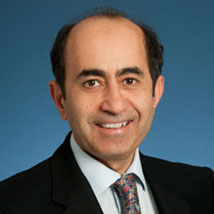

An Ontario court has quashed part of a misconduct finding against a prominent husband and wife team by the University Health Network in Toronto.
Last year, we reported that Sylvia Asa had stepped down from her position as Program Medical Director of the Laboratory Medicine Program at the UHN — the largest hospital diagnostic laboratory in Canada — after an investigation uncovered evidence of falsified data in two papers co-authored with her husband, Shereen Ezzat. Both of their research labs were also suspended as a result. The researchers subsequently appealed the decision.
On Friday Sunday, the Toronto Star reported that the court had set aside the finding of falsification, but upheld a finding of misconduct in the form of material non-compliance. It asked UHN to review the sanctions against both researchers, and cover their legal fees of $20,000.
Here’s the conclusion from the decision:
The Decision that the Applicants had committed Research Misconduct in the form of falsification and fabrication is set aside. The Decision that the Applicants had committed Research Misconduct in the form of Material Non-Compliance is upheld. The question of the appropriate sanction is remitted to Drs. Chan and Paige for reconsideration in light of the findings of this court.
As per the agreement of the parties, the Applicants are entitled to their costs of this application, fixed in the amount of $20,000.00.
Ezzat and Asa call the court’s findings “fair, principled and carefully considered,” in a statement sent to us by their attorney, Brian Moher:
We understand the Court’s reasons for declining to overturn the third allegation, namely material noncompliance with accepted standards. Nevertheless, we note that the scientific validity of our work was never an issue at any level of the proceedings.
Having dedicated years of our lives to research, allegations of falsification and fabrication of data strike at the very core of what we hold dear, and we feel vindicated that the court has exonerated us. We are grateful that our justice system restored our integrity in this most serious matter and we look forward to continuing our work of conducting research to understand and treat human disease.
A spokeswoman for UHN explained the court’s interpretations of the investigation’s findings in two statements that she sent to us, as well as to the Star. One explains, in part:
The Court did not set aside the Investigation Committee ‘s finding that falsification and fabrication had “occurred” in the research lab of Drs. Asa/Ezzat. However, the Court was of the view that this finding could conceivably be misinterpreted as a conclusion that Drs. Asa and Ezzat had themselves personally engaged in conduct that amounted to falsification and fabrication, and that this interpretation might have influenced the sanction that was imposed.
The second statement explains, in part:
It must be remembered that the Investigation Committee found numerous instances of fabrication and falsification over a period of more than 10 years. The Investigation Committee also expressly noted, as the Court pointed out in its decision, that the Investigation Committee could not determine exactly who was directly responsible for fabricating or falsifying the images in question.
Asa and Ezzat have co-authored nearly 100 papers together, three of which have been retracted. The retraction notes confirmed the existence of the UHN investigation, and that the committee found that two “articles in question contain falsified data,” and another contained duplicated portions of gels.
One of Asa and Ezzat’s papers has been flagged with an expression of concern, and more than a dozen more have been questioned on PubPeer.
The UHN statement explains what will happen next:
We expect that reconsideration of the sanction will be completed in the next few weeks and that the matter will then be concluded, subject to the completion of the investigation of the additional papers, which is still ongoing.
Given that we have a further step to take in this process, as directed by the Court, we have no further comment at this time.
The court decision notes the impact of the researchers’ work on the health of Ontario residents:
In this matter, the Decision is one concerning the Applicants’ ability to continue performing cancer research, research that affects the medical protocols used in the treatment of cancer for the people of Ontario. For example, as noted in the Applicants’ materials, their work has led to the creation of “the largest and only Pathology Department that included all sub-specialized areas of pathology, relied on by 22 other hospitals across Ontario.”
Hat tip: Andrew Paterson
Like Retraction Watch? Consider making a tax-deductible contribution to support our growth. You can also follow us on Twitter, like us on Facebook, add us to your RSS reader, and sign up on our homepage for an email every time there’s a new post. Click here to review our Comments Policy.
Mr Moher’s interpretation of the finding seems way off-base. There was no vindication of the science in the judicial review at all.
and that’s what we call spin
Cancer Res. 2008 May 15;68(10):3715-23. doi: 10.1158/0008-5472.CAN-08-0103.
Ikaros modulates cholesterol uptake: a link between tumor suppression and differentiation.
Loeper S1, Asa SL, Ezzat S.
Author information
1Departments of Medicine and Pathology, University Health Network, Ontario Cancer Institute, Toronto, Ontario, Canada.
3 authors.
Pubpeer comments: https://pubpeer.com/publications/685311CEF5DAD92CC6E89165B3C1D8
Oncogene. 2015 Feb 2. doi: 10.1038/onc.2014.440. [Epub ahead of print]
The breast cancer susceptibility FGFR2 provides an alternate mode of HER2 activation.
Wei W1, Liu W2, Serra S2, Asa SL2, Ezzat S1.
Author information
11] Department of Medicine, University Health Network, Toronto, Ontario, Canada [2] Princess Margaret Cancer Centre, Ontario Cancer Institute, University Health Network, Toronto, Ontario, Canada.
21] Princess Margaret Cancer Centre, Ontario Cancer Institute, University Health Network, Toronto, Ontario, Canada [2] Department of Pathology, University Health Network, Toronto, Ontario, Canada.
4 authors.
Pubpeer comment: https://pubpeer.com/publications/BBC278257761C0C12E5D38844873DF
Clin Cancer Res. 2008 Apr 1;14(7):1984-96. doi: 10.1158/1078-0432.CCR-07-2003.
Fibroblast growth factor 2 and estrogen control the balance of histone 3 modifications targeting MAGE-A3 in pituitary neoplasia.
Zhu X1, Asa SL, Ezzat S.
Author information
1Department of Medicine, University of Toronto, Toronto, Ontario, Canada.
3 authors.
Pubpeer comments: https://pubpeer.com/publications/18381936
Mol Endocrinol. 2009 Sep;23(9):1397-405. doi: 10.1210/me.2009-0071. Epub 2009 Jun 4.
Histone-acetylated control of fibroblast growth factor receptor 2 intron 2 polymorphisms and isoform splicing in breast cancer.
Zhu X1, Asa SL, Ezzat S.
Author information
1Department of Medicine, and the Endocrine Oncology Site Group, Princess Margaret Hospital, Ontario Cancer Institute, University Health Network, Toronto, Ontario, Canada M5G 2M9.
3 authors.
Pubpeer comments: https://pubpeer.com/publications/D2DA5809802CD6C95DD0FE85918BB0
Cancer Res. 2012 Apr 15;72(8):2017-27. doi: 10.1158/0008-5472.CAN-11-3985. Epub 2012 Feb 17.
FGFR2 isoforms support epithelial-stromal interactions in thyroid cancer progression.
Guo M1, Liu W, Serra S, Asa SL, Ezzat S.
Author information
1The Ontario Cancer Institute, Department of Medicine, University Health Network, Toronto, Ontario, Canada.
5 authors.
Pubpeer comments: https://pubpeer.com/publications/8DED35619357EB2A06497EB8DB7E02
http://i.imgur.com/7Leesa6.png
It looks like the hospital really didn’t care much:
http://www.thestar.com/news/gta/2016/02/04/uhn-sticks-by-researchers-punishment.html
This is unsurprising, given that the court found that:
“Given that neither the Committee nor Dr. Pisters were making a quasi-judicial decision
pursuant to a statutory scheme and no specific procedures were prescribed, the
Applicants were awarded the procedural fairness to which they were entitled. ”
and that:
“The question to be addressed on this appeal is whether
the inference that there were systemic flaws in the way Drs. Ezzat and Asa ran their
laboratories, which in turn led to the publication of articles with altered images that they
co-authored, was a reasonable one that was available to the Committee on the evidence it
had before them. In my view, it was.
[65] Given this, and given the fact that the multiple instances of image alterations were clearly not in accordance with the publication standards of the journals in which the articles were published, nor in accordance with the standards of the scientific community, it was also
reasonable for the Committee to find that the Applicants had committed Research
Misconduct in the form of Material Non-Compliance. As Dr. Pisters recognized,
researchers such as Drs. Ezzat and Asa, who run laboratories and are the principal
investigators and co-authors of publications coming out of those laboratories, have a
responsibility to exercise appropriate leadership and oversight of those working under
their supervision. ”
In other words, the court simply required that the hospital reconsider the punishment, but no research institute would back researchers whose labs recurrently produce problematic publications. The lead investigators were not vindicated: at a bare minimum, they ran their lab in a problematic fashion, and the science it produced is therefore highly suspect. Moreover, publications with highly suspect images were STILL being published even while the lab was under investigation (ie their 2015 Oncogene paper). Res ipsa loquitor….